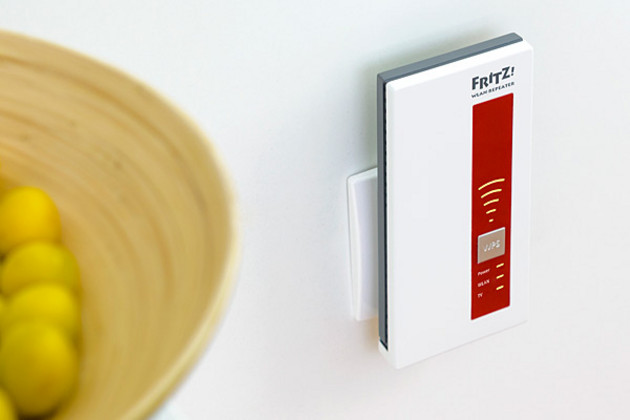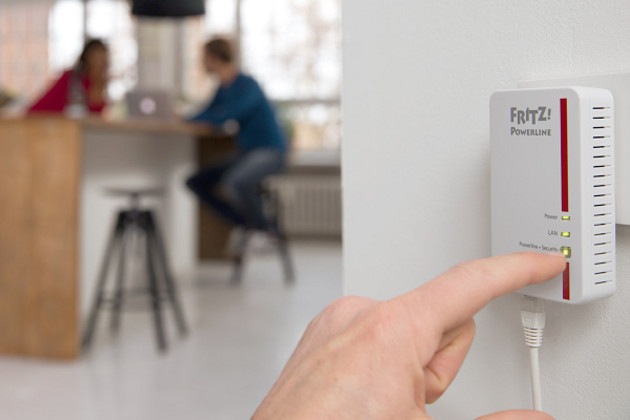Crossband repeating: An important feature
AVM Content
A quick glance at the AVM product comparison shows that most FRITZ!Repeaters, including the FRITZ!Repeater 3000 and 1200, support "crossband repeating". What exactly is it and why is the feature important for rapid data exchange in your home network?

A step backwards: same band repeating
Repeaters receive the Wi-Fi signal from the FRITZ!Box and retransmit it, extending the reception range. In technical jargon this process is called "repeating". The FRITZ!Box and the client (e.g., smartphone, tablet, notebook) exchange data, with the repeater serving as the central exchange.
Older devices used the 2.4 GHz band exclusively, but since the introduction of Wi-Fi 5, the 5 GHz band has also been available. These bands involve a frequency range in which router, repeater and client communicate. If the FRITZ!Box and repeater support only the 2.4 GHz band, for example, repeating takes place only on that band. This is referred to as "same band repeating".

Crossband repeating
Crossband repeating works in a different way. When the router and repeater support both bands, they're always connected to each other on the two bands. Parallel exchange accelerates the transmission. The individual clients are connected to the repeater either via the 2.4 GHz or 5 GHz band, but benefit from crossband communication to the FRITZ!Box.
No loss of speed
In same band repeating the data packets are first received by the repeater and then retransmitted. Speed is halved in favor of increased range. In crossband repeating when the data switches from one band to the other during transmission, there is no loss of speed. That's possible because transmission and reception can run parallel during the switch. With same band repeating, data transmission and reception occur one after the other. Therefore, crossband repeating trumps same band for fast communication in your home network.
Intelligent band selection
With the new FRITZ!Repeater generation, AVM goes one step further by equipping these devices with "intelligent crossband repeating", which independently selects the most suitable band for transmission. In practice it looks like this: The repeater selects a band for each registered client and re-transmits the data accordingly. When Wi-Fi 5 is used, the repeater re-transmits data from a 5-GHz client to the Box via that band (same band), while a 2.4-GHz client changes the band and continues along the 5 GHz track (crossband).
This of course works in the other direction too. If the router can transmit only on the 2.4 GHz band, the communication to the repeater takes place there. From that point the data switches to the 5 GHz band in order to reach the intended clients.

































































